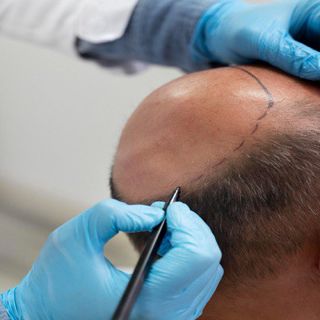Best Hair Transplant Surgery Recovery: What You Need to Know for Optimal Results

Introduction
Hair transplant surgery is a transformative procedure for individuals experiencing hair loss or thinning. While the procedure itself is crucial, recovery is a critical phase that significantly impacts the final results. Proper recovery ensures that the transplanted hair follicles establish themselves successfully and promotes overall scalp health. This article provides a comprehensive guide on the best practices for the Best Hair Transplant Surgery in Oman recovery, offering essential tips and advice to achieve optimal results.
Understanding the Hair Transplant Procedure
What Happens During a Hair Transplant?
Hair transplant surgery involves relocating hair follicles from a donor area, typically the back or sides of the head, to areas with thinning or no hair. The two main techniques used are Follicular Unit Transplantation (FUT) and Follicular Unit Extraction (FUE). Both methods aim to create natural-looking results, but they differ in their approach and recovery process.
FUT: Involves removing a strip of scalp from the donor area and dissecting it into individual grafts.
FUE: Involves extracting individual follicular units directly from the scalp.
Immediate Post-Surgery Care
First Few Days: What to Expect
The initial days following your hair transplant are crucial for setting the stage for a successful recovery. Here's what you should anticipate:
Swelling and Discomfort: Some swelling and discomfort are normal. Applying ice packs to the forehead can help reduce swelling.
Graft Care: Keep the transplanted area clean and avoid touching or scratching the scalp.
Medications: Follow your surgeon’s instructions regarding pain management and antibiotics to prevent infections.
Follow-Up Appointments
Attending follow-up appointments with your surgeon is essential for monitoring your progress and addressing any concerns. These visits allow your surgeon to assess the grafts and ensure that the healing process is on track.
Key Recovery Tips for Optimal Results
1. Avoid Physical Strain
For the first few weeks, it's important to avoid strenuous activities and heavy lifting. Physical exertion can increase blood flow to the scalp and potentially dislodge the grafts.
2. Maintain Proper Scalp Hygiene
Follow your surgeon’s instructions on washing your scalp. Usually, gentle, non-medicated shampoos are recommended to avoid irritation. Avoid washing your hair with hot water and opt for lukewarm temperatures.
3. Protect Your Scalp
Protect your scalp from direct sunlight and harsh weather conditions. Wearing a loose-fitting hat or using sunscreen can shield the transplanted area.
4. Avoid Smoking and Alcohol
Smoking and excessive alcohol consumption can impair blood circulation and hinder the healing process. Avoid these habits to support optimal recovery.
5. Follow a Healthy Diet
A balanced diet rich in vitamins and minerals supports overall healing and hair growth. Foods high in vitamins A, C, E, and iron can contribute to healthier hair follicles.
Managing Post-Transplant Symptoms
Common Side Effects
It’s normal to experience some side effects after a hair transplant, including:
Redness: Mild redness at the donor and recipient sites.
Crusting: Formation of crusts around the grafts, which will eventually fall off.
Shedding: Transplanted hair may shed in the early stages, which is a normal part of the hair growth cycle.
When to Seek Medical Attention
If you notice severe pain, excessive bleeding, or signs of infection, contact your surgeon immediately. Prompt attention to any issues ensures that complications are addressed early.
Long-Term Care and Maintenance
Hair Growth Timeline
Hair growth after a transplant occurs in phases:
Initial Shedding: The transplanted hair may shed within the first few weeks.
Regrowth: New hair growth typically begins around 3 to 4 months post-surgery.
Mature Results: Full results are usually visible between 9 to 12 months.
Ongoing Hair Care
Maintain a routine that includes gentle scalp care and regular trims to support hair health. Consider discussing ongoing treatments with your surgeon to enhance hair growth and overall results.
Conclusion
Recovery after a hair transplant surgery is a pivotal phase that can influence the success of the procedure. By adhering to the best practices outlined in this guide, you can optimize your recovery and achieve the desired results. Remember to follow your surgeon’s instructions, maintain a healthy lifestyle, and be patient as your hair grows and transforms. With proper care, the benefits of your hair transplant will become evident, restoring your confidence and enhancing your appearance.
Royal Clinic Dubaiさんをフォローして最新の投稿をチェックしよう!
0 件のコメント
この投稿にコメントしよう!
この投稿にはまだコメントがありません。
ぜひあなたの声を聞かせてください。
